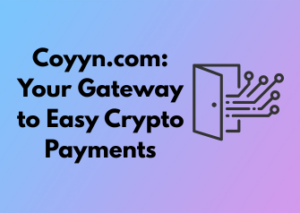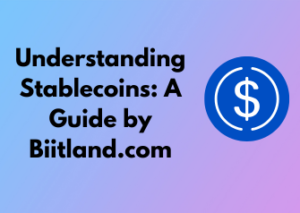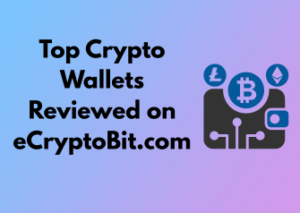Selling Pi cryptocurrency may seem a bit tricky if you’re new to the crypto space, but don’t worry – this guide will walk you through the key steps and make things a lot clearer. Whether you’re holding Pi from mining on the Pi Network or simply need to cash out for other uses, it’s important to understand your options and how to approach the process.
What You Need Before Selling Pi Cryptocurrency
Before you start the selling process, there are a few essentials you’ll need to have ready. Skipping these steps might slow you down:
1. Verified Pi Wallet
Ensure you have a functional Pi Wallet setup. You’ll use this to transfer your Pi to the buyer or trading platform. Follow the wallet verification process within the Pi Network app if you haven’t already.
2. KYC (Know Your Customer) Verification
KYC validation is mandatory on the Pi Network to unlock and move your mined coins. This step proves your identity and allows you to engage in transactions freely.
3. Platform or Buyer
Decide how you’ll sell – through a crypto trading platform (once Pi hits external exchanges) or directly to a buyer in a Peer-to-Peer (P2P) transaction.
4. Market Research
Understand Pi’s current value in the crypto ecosystem. Prices may fluctuate, especially if it’s listed on trading platforms. Keep updated on any official Pi Network announcements.
Methods to Sell Pi Cryptocurrency
Currently, Pi Network operates in a closed environment, meaning Pi coins aren’t fully available on public exchanges yet. However, there are two potential methods to sell your Pi:
1. Peer-to-Peer (P2P) Transactions
P2P is one of the most common ways to sell Pi cryptocurrency right now.
How It Works:
1. You find an interested buyer, either through Pi’s in-app marketplace or external groups like social media communities.
2. Both parties agree on a price for the transaction.
3. The buyer and seller use Pi Wallets to complete the transfer, while the payment (fiat or other cryptocurrencies) is handled separately.
Key Tips for P2P Selling:
– Use trustworthy platforms or communities to find buyers.
– Confirm the legitimacy of the buyer before proceeding.
– Always ask for payment upfront or use an escrow service to secure both ends of the deal.
Pros and Cons:
| Direct control over pricing | Risk of scams or disputes |
| No middleman fees | Limited buyer options |
2. Future Sale on Public Exchanges
The Pi Network team has announced plans to release Pi on public exchanges after the open mainnet launch. While this hasn’t happened yet, here’s what to expect when it does:
How It Will Work:
1. Transfer your Pi coins from your wallet to a crypto exchange that lists Pi.
2. Place a sell order on the exchange to trade Pi for other crypto (like Bitcoin, Ethereum) or for fiat currency.
Key Tips for Exchange Transactions:
– Choose reputable and secure exchanges to avoid fraud.
– Learn about trading fees, as these will affect your final profits.
– Monitor the market closely to sell Pi when prices are favorable.
Pros and Cons:
| Wider pool of buyers | May take time until Pi is listed |
| Price may increase with higher demand | Exchange fees could reduce profit |
Best Platforms and Groups to Sell Pi (Right Now)
While Pi isn’t listed on major exchanges yet, here are a few places to explore selling opportunities:
Pi Network In-App Marketplace
The app’s internal ecosystem allows users to trade goods and services using Pi. While technically you aren’t selling for cash, this is a good option to use your Pi for value.
Social Media Groups and Forums
Communities on platforms like Telegram, Discord, and Facebook host discussions and trading opportunities for Pi users. Be cautious, as scams are more common in informal spaces.
Cryptocurrency Escrow Services
Some independent services act as intermediaries for P2P trades, ensuring that payments are only released once the transaction is complete.
Step-by-Step Guide: How to Sell Pi Cryptocurrency Safely
Below is a simple breakdown of how to sell Pi coins through direct methods:
1. Step 1: Prepare Your Pi Wallet
– Ensure your Pi is unlocked via KYC verification.
– Double-check the balance in your Pi wallet before beginning any trade.
2. Step 2: Choose a Selling Method
– Decide between P2P transactions or waiting for the public exchange listing. Most users currently rely on P2P.
3. Step 3: Find a Buyer or Platform
– Use trusted channels like Pi forums, social media groups, or community referrals.
4. Step 4: Set a Fair Price
– Research the latest trading values of Pi within your community. Accurate pricing avoids wasting time negotiating.
5. Step 5: Execute the Trade
– For P2P: Share your wallet address for Pi transfer, then confirm payment before transferring Pi.
– For future exchanges: Ensure you’re familiar with exchange trading procedures.
6. Step 6: Secure Your Profits
– Safely store or withdraw any earnings from the sale.
Closing Thoughts: Staying Safe While Selling Pi Cryptocurrency
Right now, selling Pi cryptocurrency involves some risks due to its limited availability on public platforms. However, by staying informed, approaching trades cautiously, and using secure methods, you can make the process smoother. Be patient, especially as new developments arise from the Pi Network team regarding its listing on major exchanges. Keep an eye out for trustworthy updates and always prioritize safety over quick profits.











